Sep 18 – 22.
We finished up our sojourn around Spain in the Northwestern regions – in both Castilla y Leon province and a quick drive through Asturias to the Northern coast. We were looking forward to catching up with friends Jose and Marta. In 2017 they traveled in the Southeast US and spent some time with us on Pensacola Beach. We have stayed in touch via Whatsapp over the last five years and now we get to see their homeland. They live in the city of Leon which is located in the Castillo de Leon region of Northwest Spain.
On Sunday afternoon we caught a train from Madrid-Charmontin station to at the Valladolid station, a one hour ride on the fast train. I really had no idea what Marta had planned for our five days together and it was a nice change to not be in charge of the itinerary. We soon learned that we were going to sample towns in both the regions of Castilla y Leon and Asturia.
Originally we had booked tickets to the city of Leon where they live and work but Marta wanted us to meet them in Valladolid – a town where they both grew up. We had a nice albeit short stay with Marta’s mother in her lovely apartment situated between the river and a school complex. Marta was very excited to show us her town during our one evening and day in Valladolid which is the capital city of the region. We walked the old town, the Plaza Mayor (main square), along the river, through the park and then through the city center. The town boasts Renault and Michelin tire factories. The town was once the home of Castillian kings, many churches and once was filled with monastaries and convents. Valldolid has a population of about 500,000.
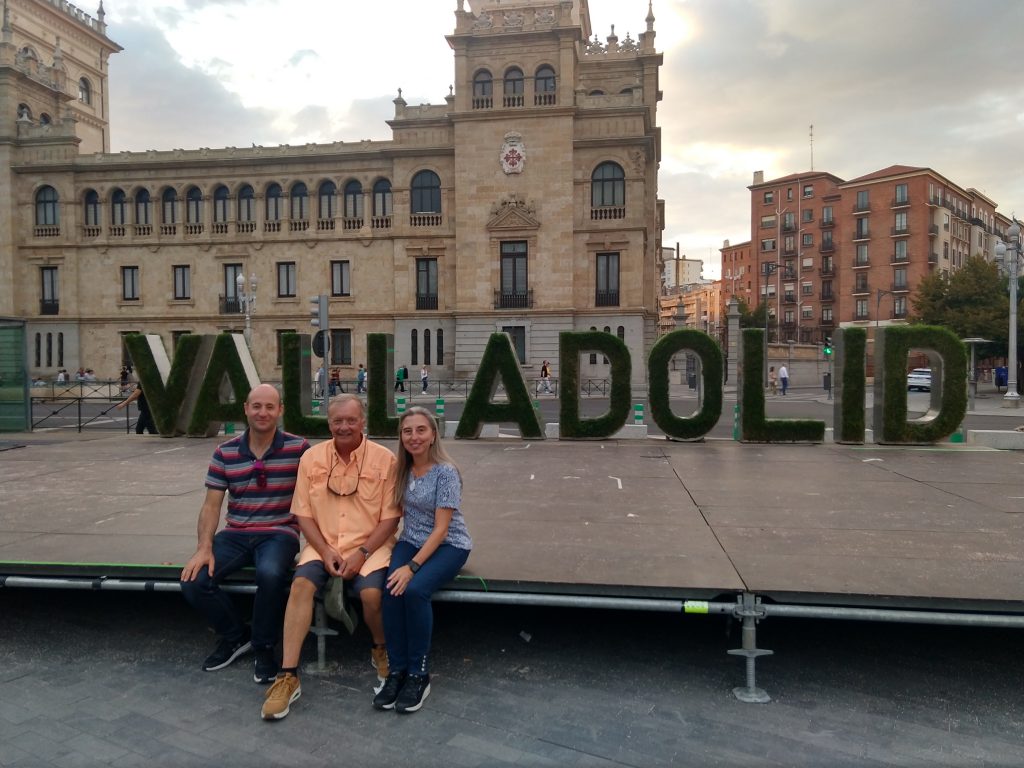
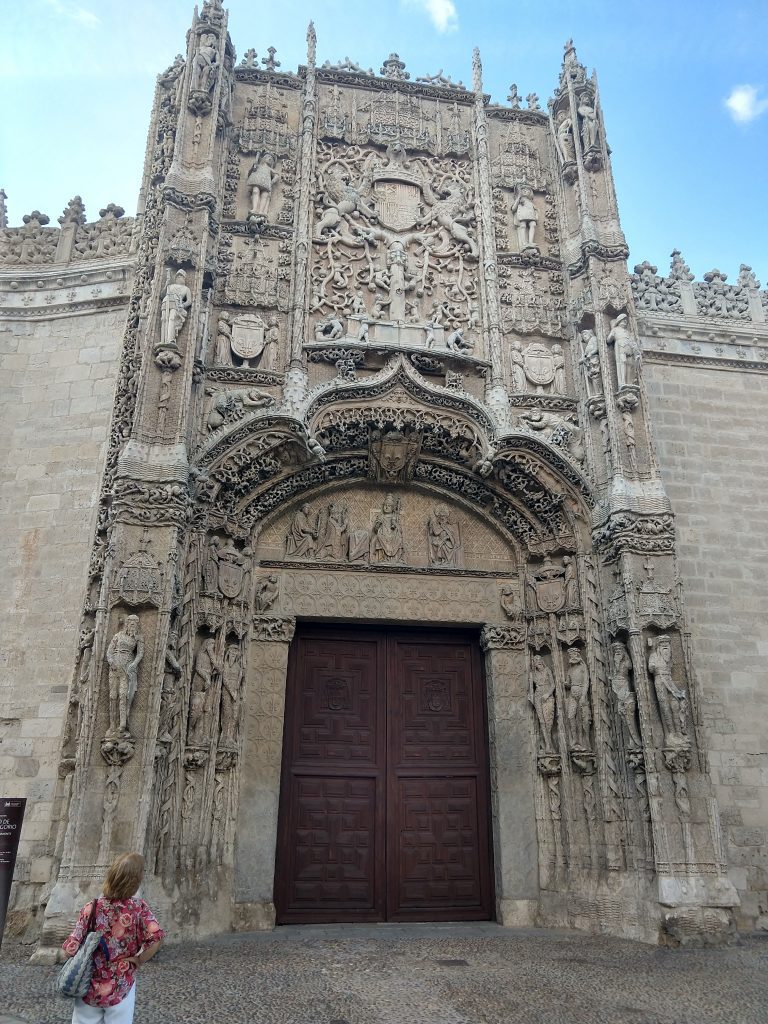
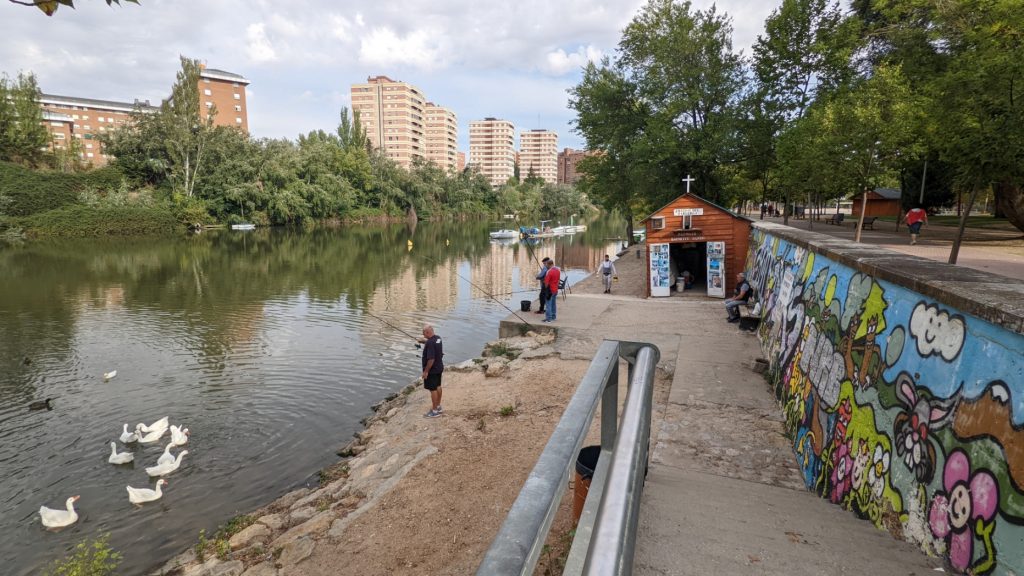
Our schedule each day has been a light breakfast with coffee con leche (hot milk), toast with either jamon (ham), marmalade or tomato sauce. Then around 11:30 during our walks we would stop for coffee and maybe a little sweet. Lunch is eaten between 2 and 4, followed by a siesta. The restaurants open late, sometimes after 8pm and Spaniards start showing up around 8:30pm for dinner. We had some trouble getting tables on this trip for lunch and dinner when we didn’t have a reservation.
In Valladolid we visited a confectioner’s shop (Confiterio Cubero) that has its own museum with sugar sculptures of the town’s historical buildings. We picked up some desserts to take home for our afternoon lunch.
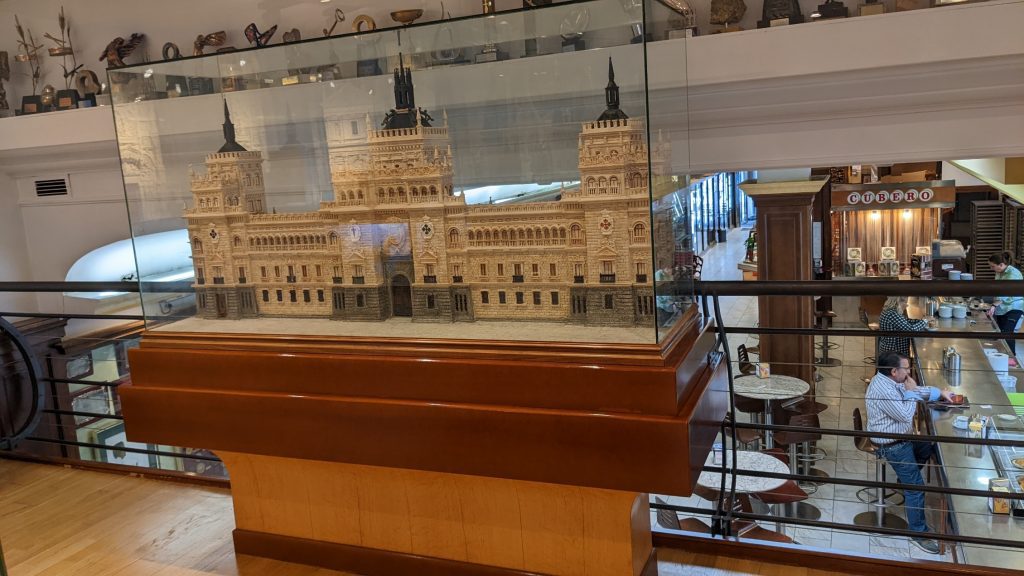
While we were exploring the town, Marta’s mother was making us a feast for lunch. We started with a Ensaladilla Russa (Russian salad) which is a popular seafood salad served throughout Spain. It was served in these wonderful cracker-like shells called cortezas de trigo. Raw, they look like a small lasagna noodle. After a short time in the microwave, they blow up into these shapes that you fill with the salad. They were so good, I had 2 servings and by the end of the meal I was very very full. After entrée of meat dish with cooked vegetables, we had our pastries – each one delicious.
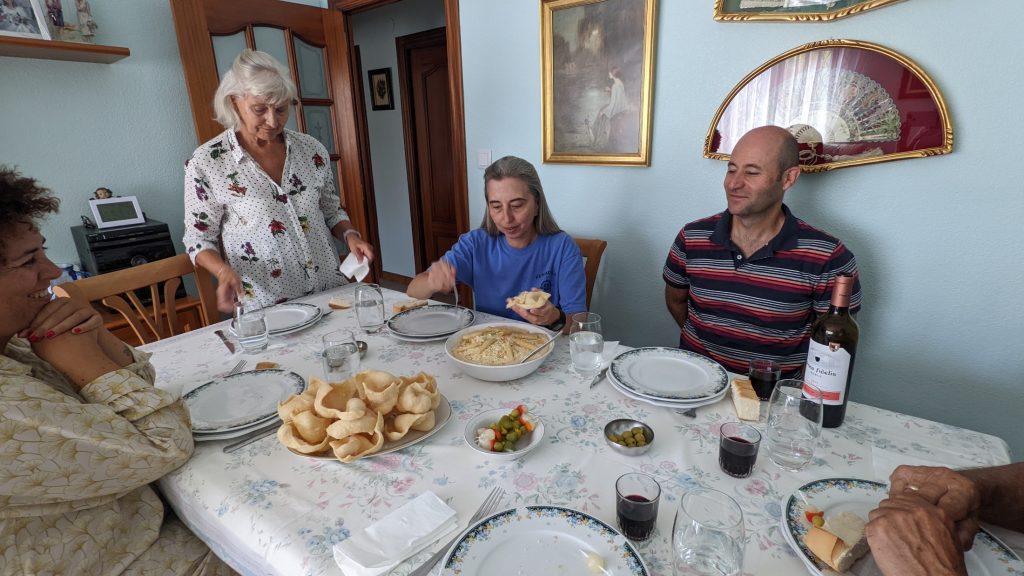
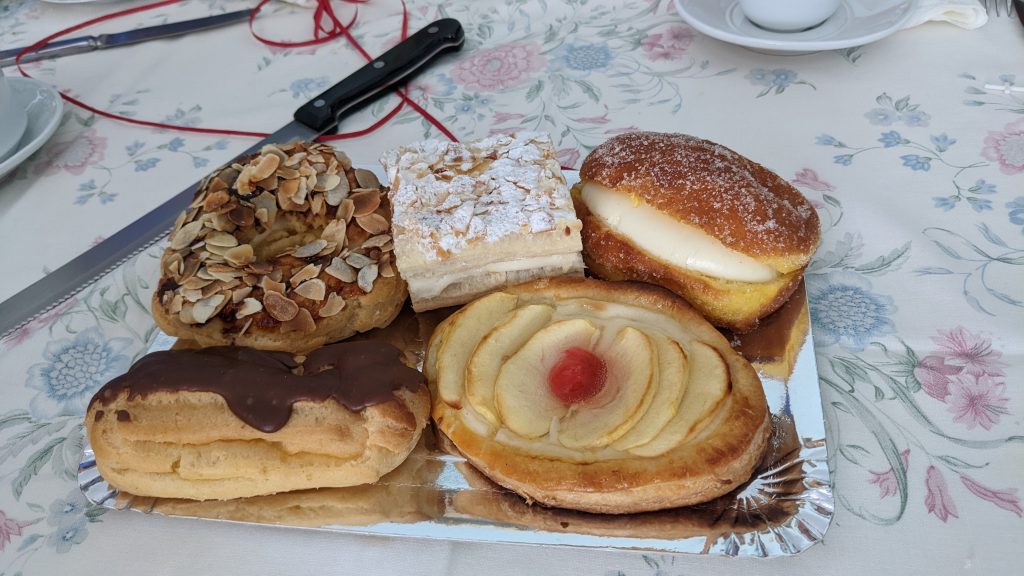
A typical time for lunch in Spain is between 2pm and 4pm which is followed by a siesta if time permits. Everyone heads for their respective beds for a quick power nap. After siesta, we left Vallodolid about 6pm for the 1 hour trip to Leon. Jose works for the Guardia Civil police and they live in accommodations provided for staff – similar to army barracks in the US. It is the safest place in the city, even though crime doesn’t seem to be problem. We tried a few places for cheap good wine with free tapas near their home – I was tired and not up for a lot of walking that evening. We have decided we love the Ribero de Douro red wine in Spain. We even bought a bottle to bring home.
On Tuesday, we headed out for our scenic drive from Leon to the seaside city of Gijon on the Northern coast of Spain. Gijon is in the Asturias provine. Our friends have a place at the beach there. We took the long route and stopped along the way at many scenic vistas. For the first part of the trip as we travelled through the Leon region, much of it an arid, flat plateau with miles and miles of wheat farms, very few trees and a few villages. The area is known for its castles but we didn’t have time on this year’s trip. Just after leaving the region of Leon and entering Asturias the scenery started to change and became very lush and mountainous.
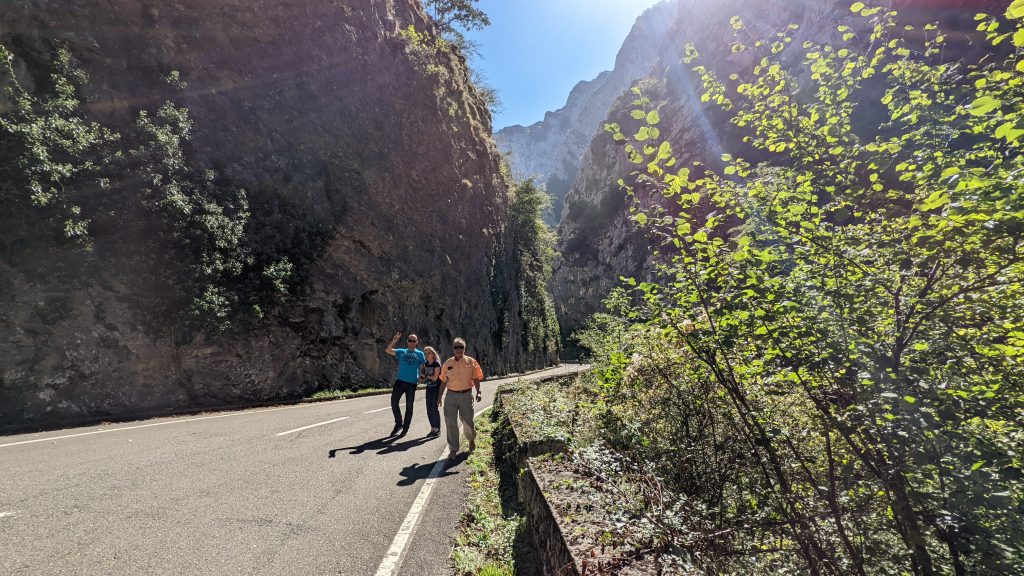
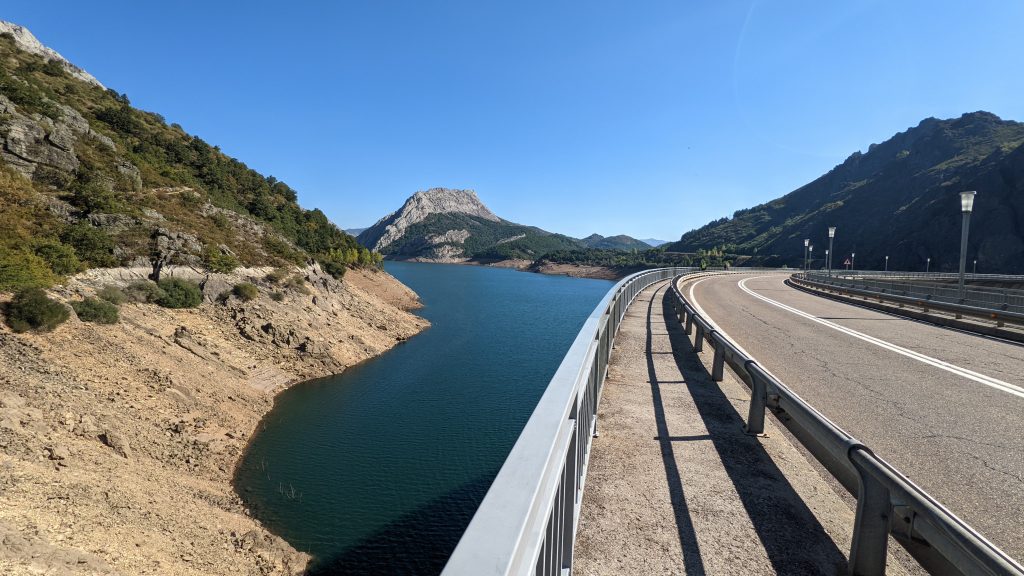
We drove through several national parks and passed through many traditional villages. We crossed the Camino de Santiago a couple of times and saw a few hikers along the road. For lunch we had the daily menu at a hotel/adventure facility with great views and decent food – two or three courses plus drinks and dessert for 12 euros is typical. These restaurants could double their profit margins by cutting the portion sizes in half.
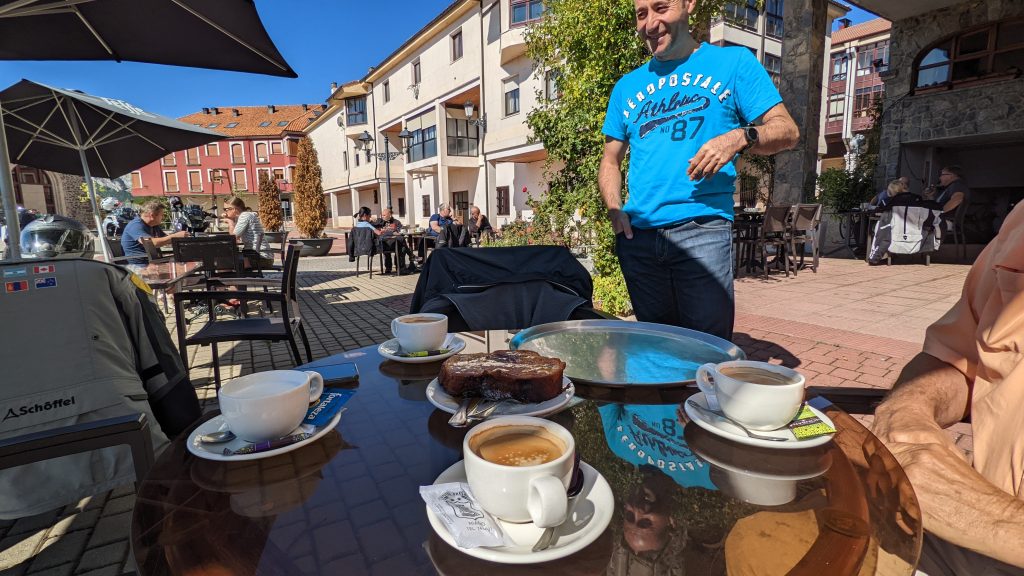
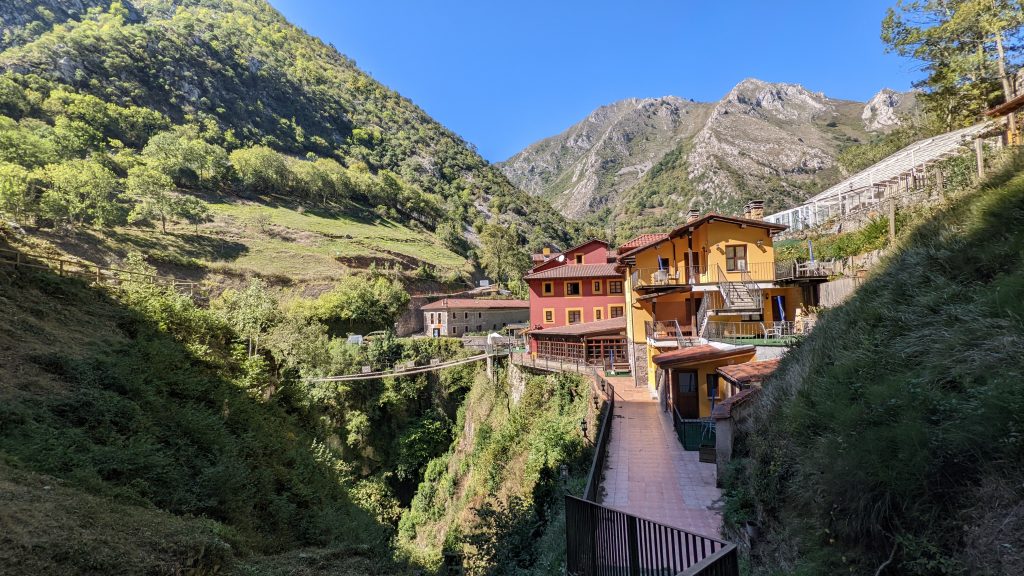
Coming out of the mountains was the bustling town of Cangas de Onis with its 13th century Roman bridge over the River Sella, now a foot bridge and shared by two villages. The bridge has seven arches and from the central arch hangs a reproduction of a famous Victory Cross, which celebrates a battle victory of the Christians over the Muslims.
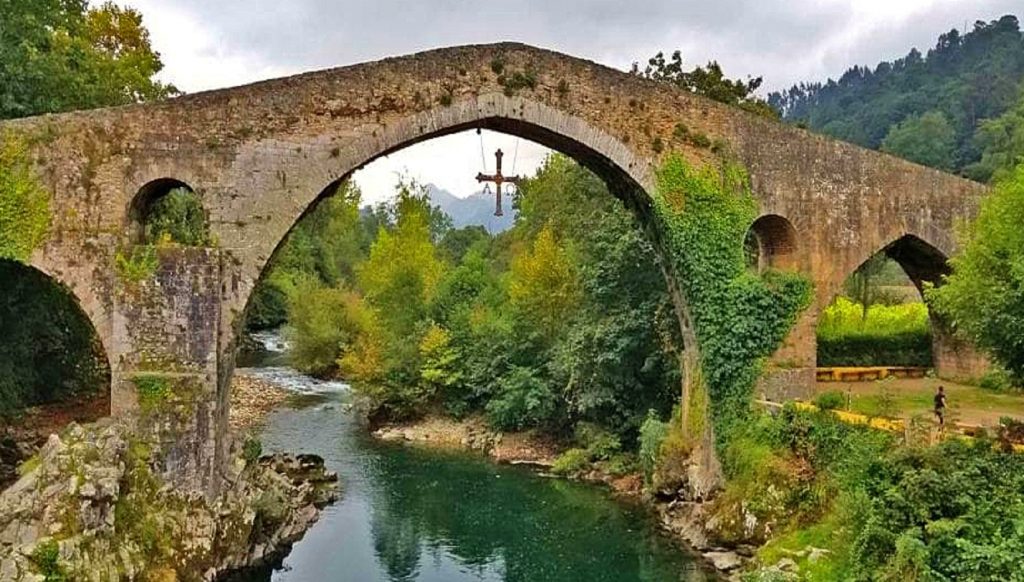
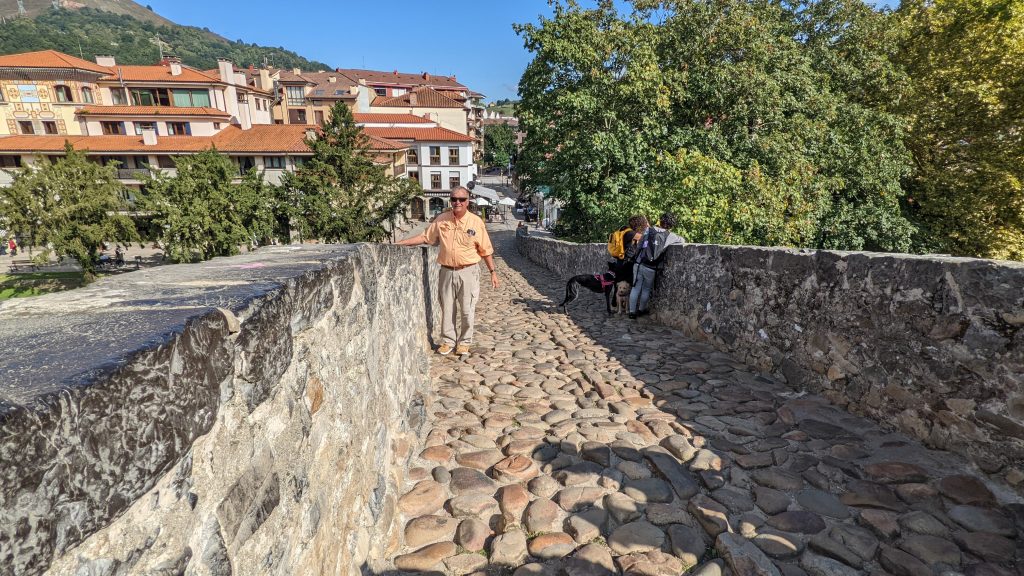
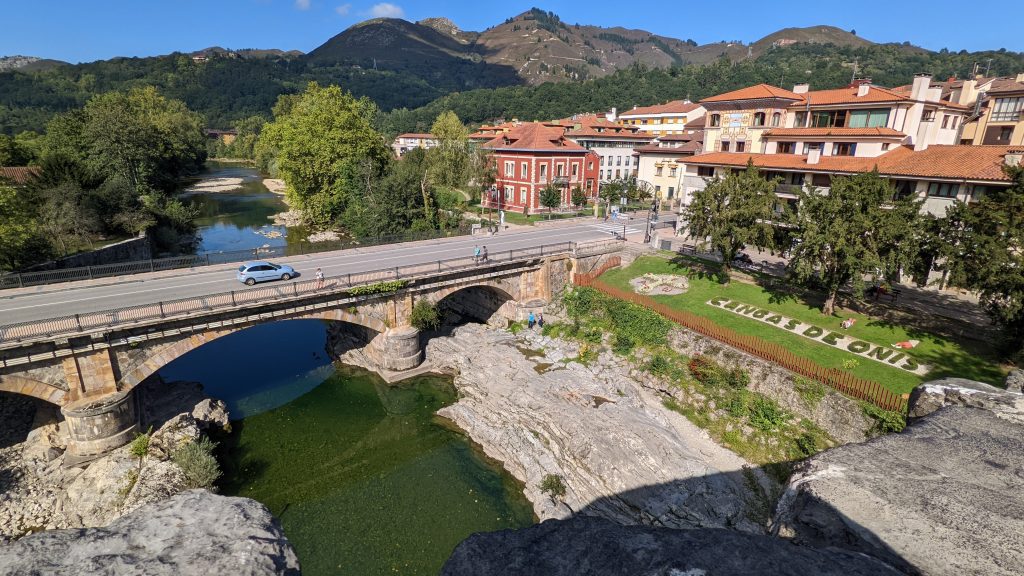
The rest of the drive involved many switchbacks up and down the mountains through stunning scenery. Jose was a real trooper to do the driving and Bill was very glad to just be a passenger. We finally reached the beach town of Gijon which I would call a city beach town. The coasts are lined with mid-rise and high-rise buildings – a combination of classic art nouveau facades next to modern facades and many ugly “franco era communist style” facades. The roads are wide and there is a seaside promenade that goes for many many miles. At low tide the sandy walkable beach is quite wide and was filled with people on the move all day long. The water was calm in the mornings when the paddle boarders shared the water with the fisherman. By afternoon the wind was howling and the wind surfers put on a quite a show from our 11th floor viewpont. At one end of the Playa de Lorenzo beach was the old town. There is a medium sized marina and a shipping port as well. Behind the towers that line the coastal road is the modern busy city. We really liked what little we saw of Gijon – the weather is moderate and not too hot in the summer. There are many restaurants, bars, shopping and cultural activities in addition to the beach and sporting. I would definitely come back to this love spot on the North coast of Spain.
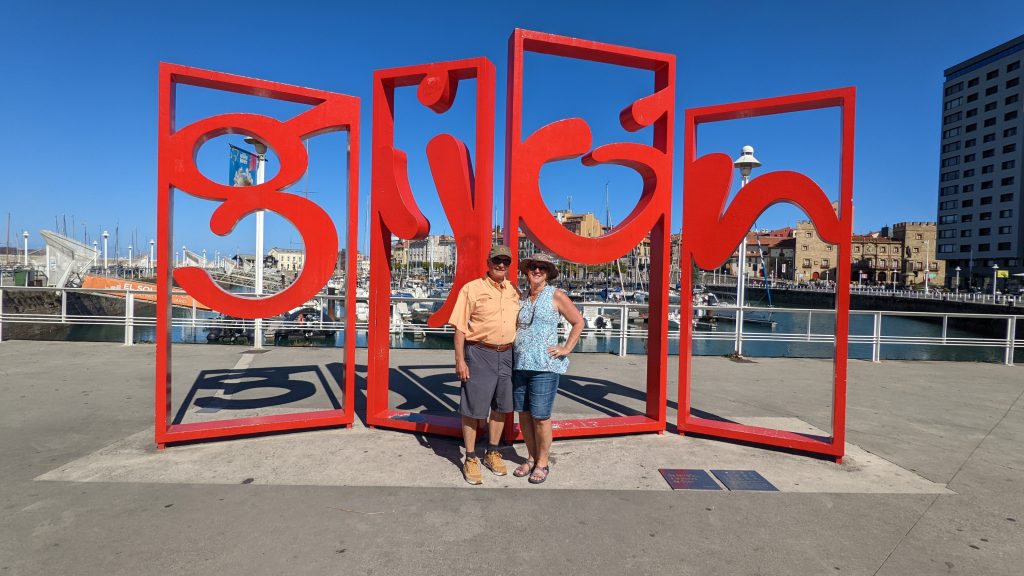
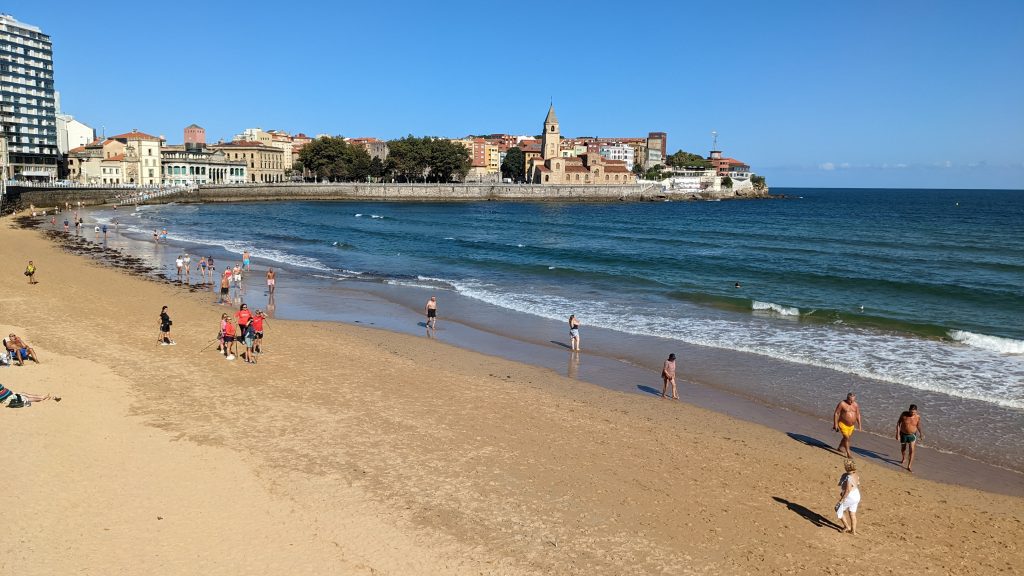
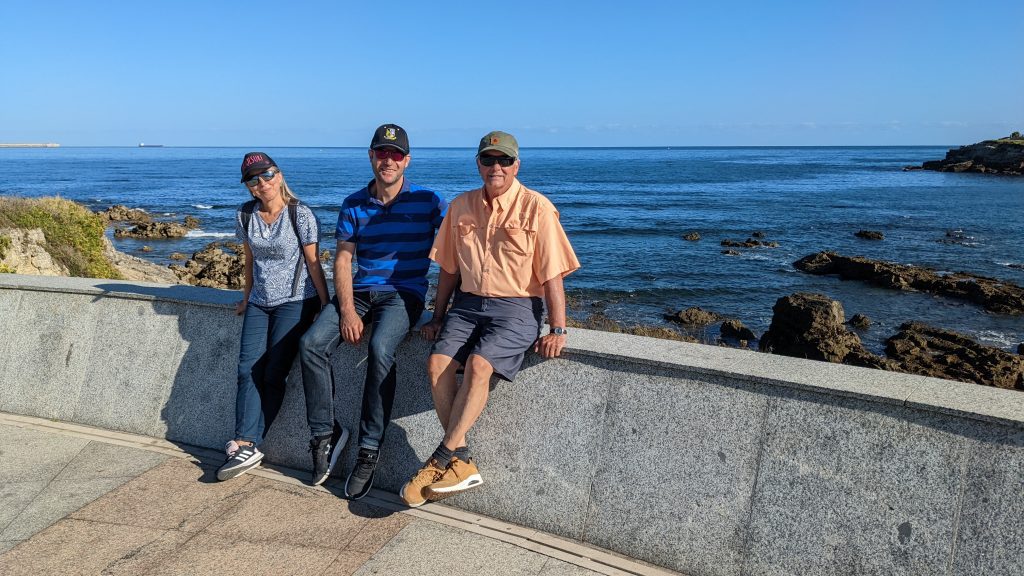
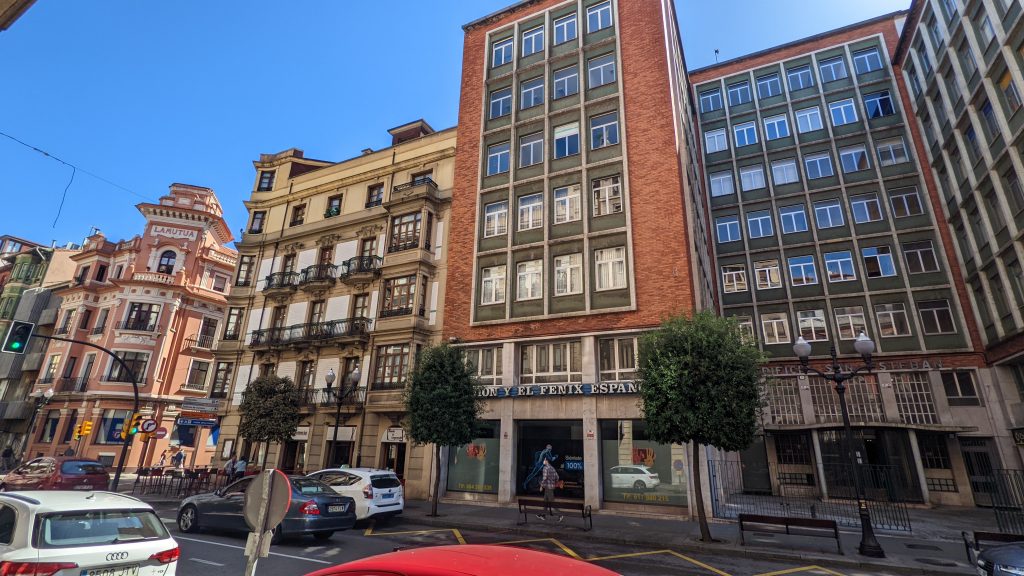
We were sad to leave after our 24 hour stay in Gijon to head back to Leon. We took a more direct route that is just under 2 hours. Our halfway point was the famous Meson Ezekial restaurant and meat processor. This place is very popular with the locals and it can be hard to even get a table. We were lucky to find a place inside to drink our wine and meat tapas. Total bill was less than 10 euros. We bought some of the chorizo and jamon (ham) to bring back to Pensacola, but it was nabbed by customs in Atlanta and into the trash it went.
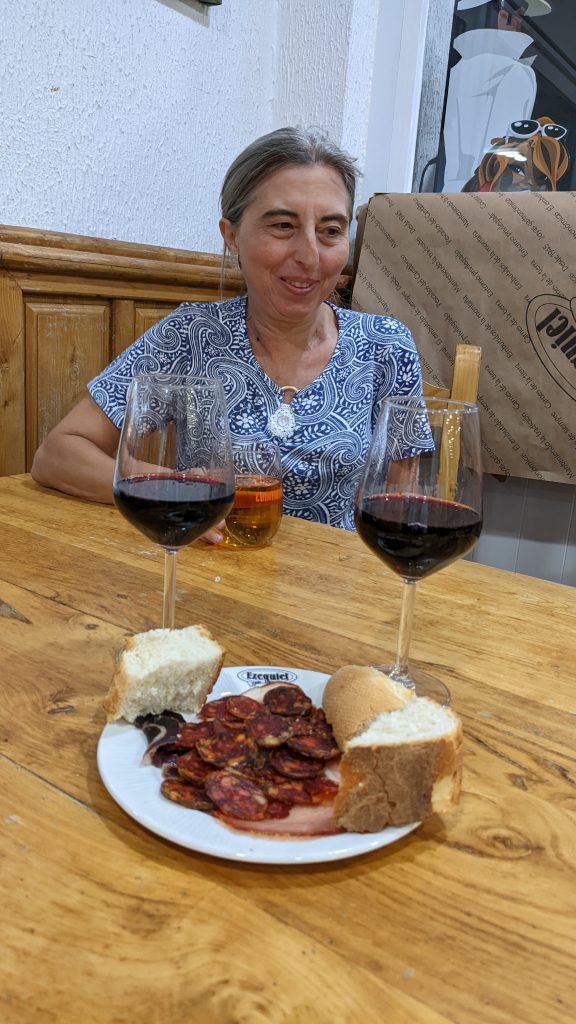
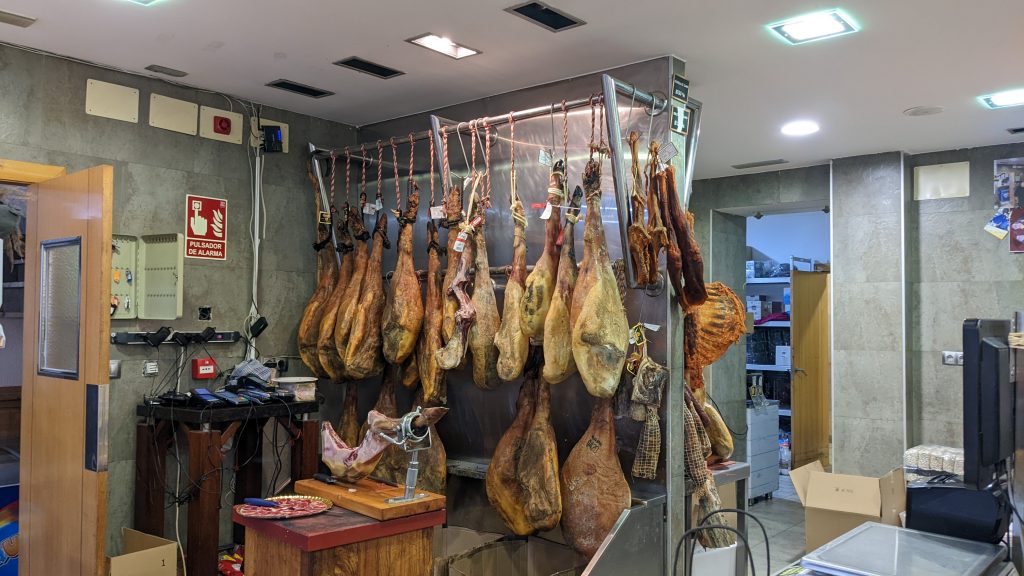
Spain’s old towns are built around their rivers and are home to many green spaces and parks. Leon sits on the Bernesga River in Northwest Spain and is the capital of the Province of Leon. It is home to many churches and cathedrals including the Gothic 13th century Catedral de Leon and the Romanesque 10th century Basilica de San Isidoro with its roman frescoes and royal tombs.
We didn’t really have enough time to deep dive into Leon but we saw the highlights. One of the roads of the famous Camino de Santiago pilgrimage walk goes right through the middle of the Leon. We walked a very small portion just to say we did. Saw the outside of the Parador (hotel) that used to be a palace and is now a hotel. In the evening, we walked the old town and saw the Catedral lit up at night. We had wine and tapas in a sweet little garden restaurant. Our pattern of getting seated in the very back of every restaurant continued even after we met up with the Spaniards. The next morning, we visited two important historical sites – the Museum de San Isidor and the Catedral de Leon.
The Santa María de León Cathedral, is one of the most relevant examples of the Gothic style in Spain. It was built on the site of previous Roman baths of the 2nd century which, 800 years later, king Ordoño II converted into a palace. Almost all of it was built between 1205 – 1301, the north tower and cloister were built in 14th-century, and the south tower completed in 1472. The inside of this church and other cathedrals in spain are difficult to photograph because they are so big. The cloister is an exterior part of the church and is quite ornate as well and filled with statues.
Marta wanted us to visit the Basilica de San Isidor to see the early Christian frescos painted in the 10th and 11th centuries. We signed up for an excellent one hour English tour. The library contains books as old as the 10th century meticously handwritten by the monks. The treasure of the library is a Visigothic- Mozarabic Bible, all 514 pages in perfect condition. The book was created around 960 by Christian monks who lived in the South of Spain in an Arab world at the time. The preservation is perfect, no missing pages and the colors of the Old Testament pictures still retain vivid. Photos are not officially permitted so these will have to do.
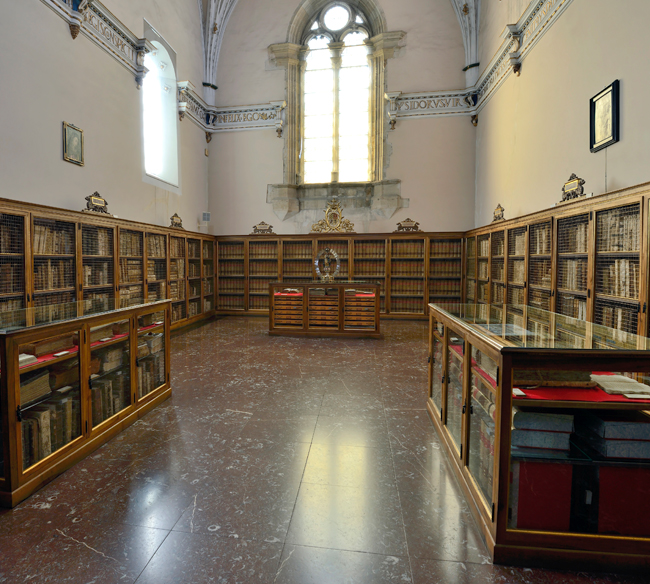
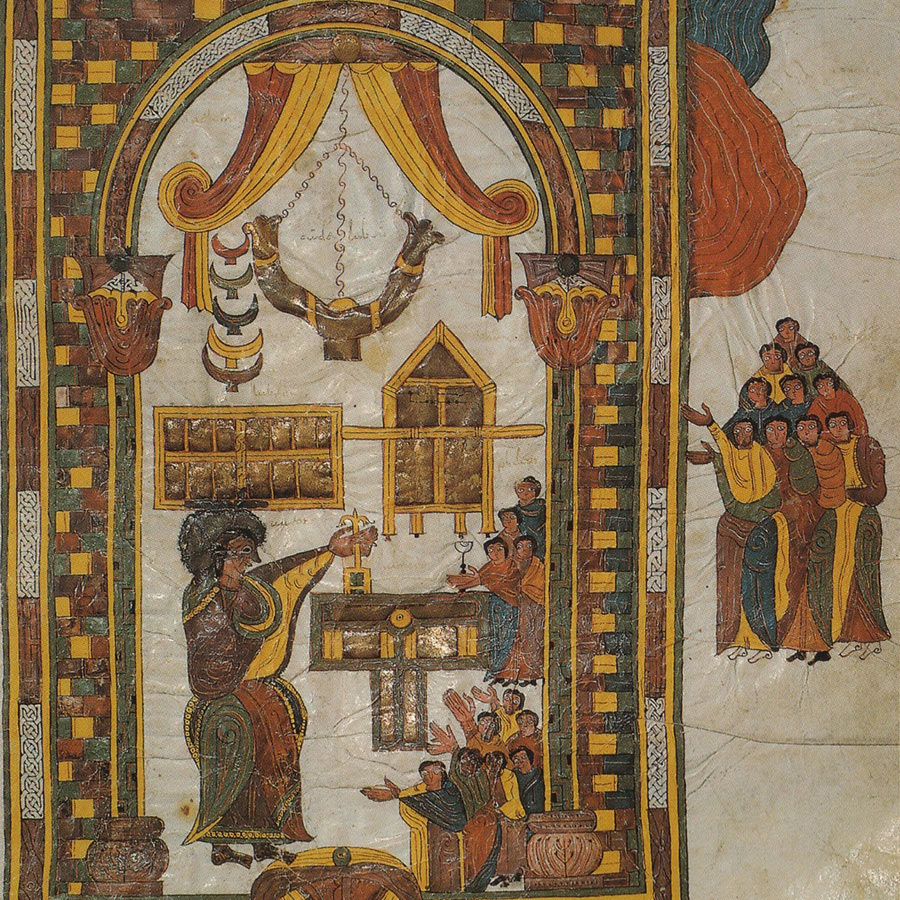
The Royal Pantheon is a chapel covered with frescos painted in the 11th and 12th centuries. Many kings and nobles were/are buried in this chapel. Half of the pantheon was under renovations during our visit but we got a sense of the artwork. This photo comes from the Museo de San Isidoro website.
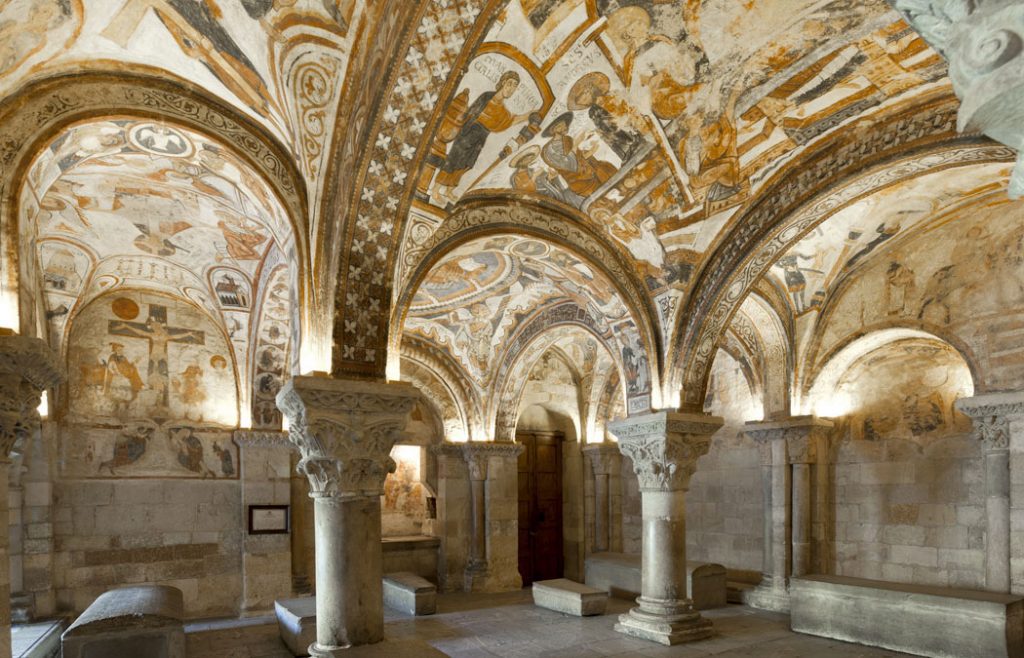
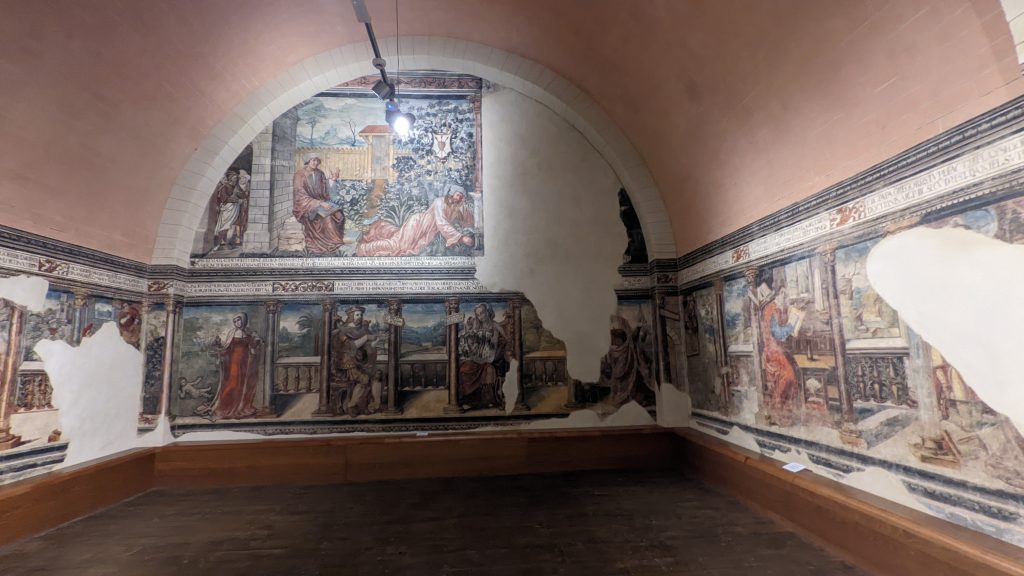
Our sightseeing was followed by an excellent lunch a few blocks outside the tourist zone at Restaurante Cerveceria Rio Omana. The restaurants in the old town on the main drag – Calle Anche – were 22 euros for menu el dia while the places just outside the old town were the typical 12 euros per person. The menu of the day at Omana included wine – a bottle of Ribera for the table, more if you want, water, two courses, and dessert.
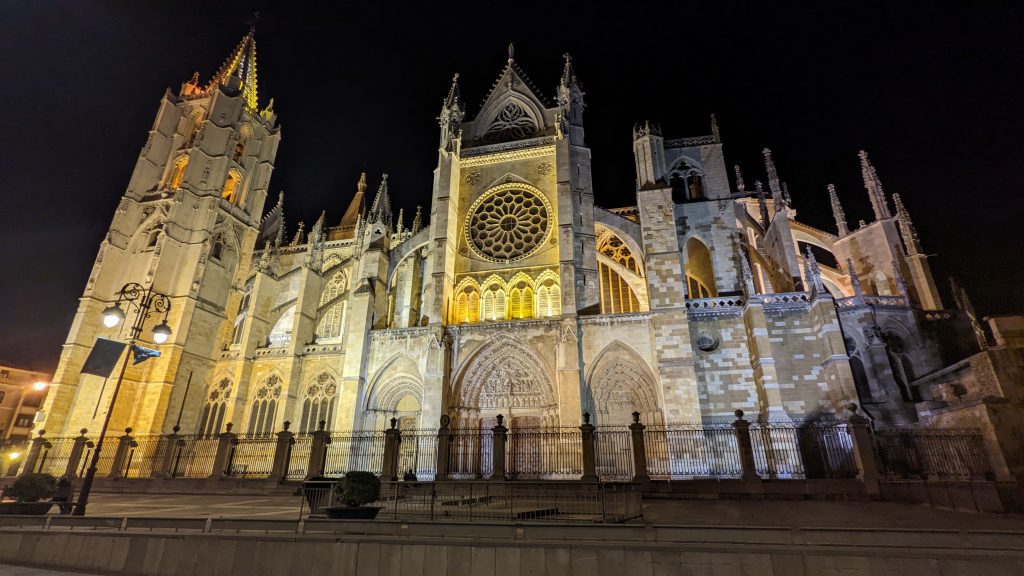
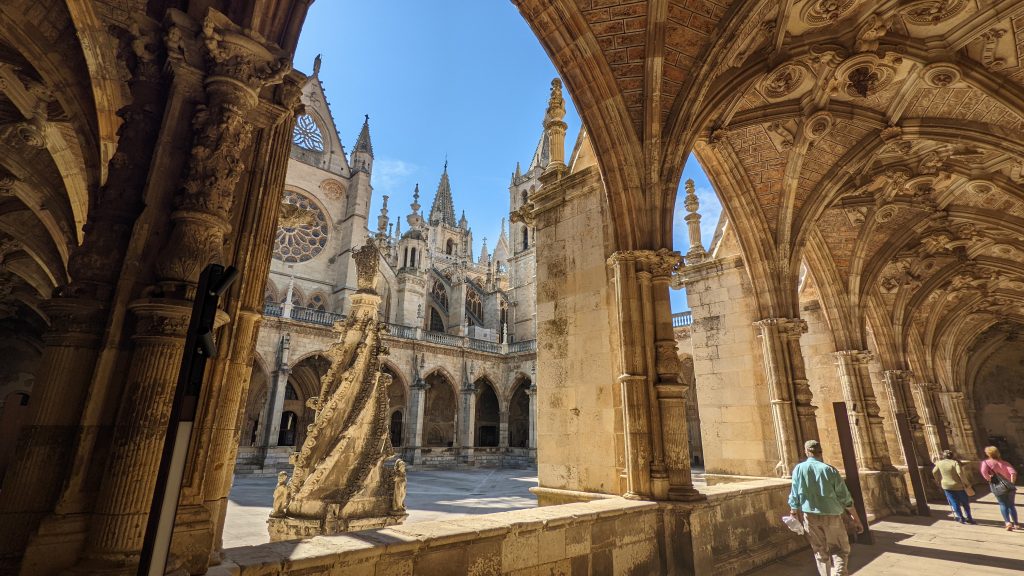
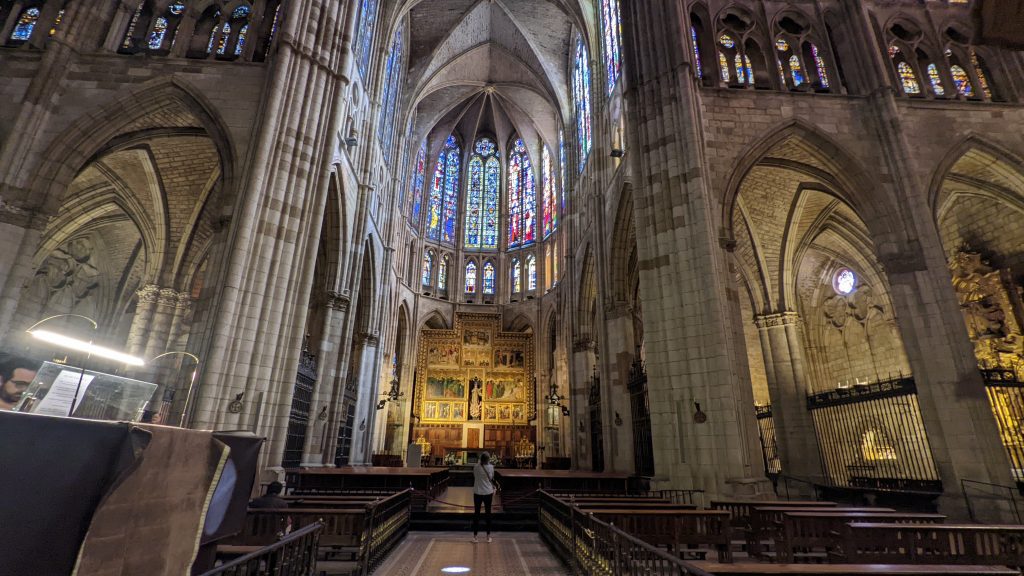
We are ending our trip in Madrid where we booked a hotel close to the aiport the night before our flight home to Pensacola. It has been a great trip.
Spain is very diverse and there are so many things to see and try. We just had a taste on this trip and look forward to coming back. I think my next trip might be for a language immersion experience. It’s time to become more proficient in Spanish.
